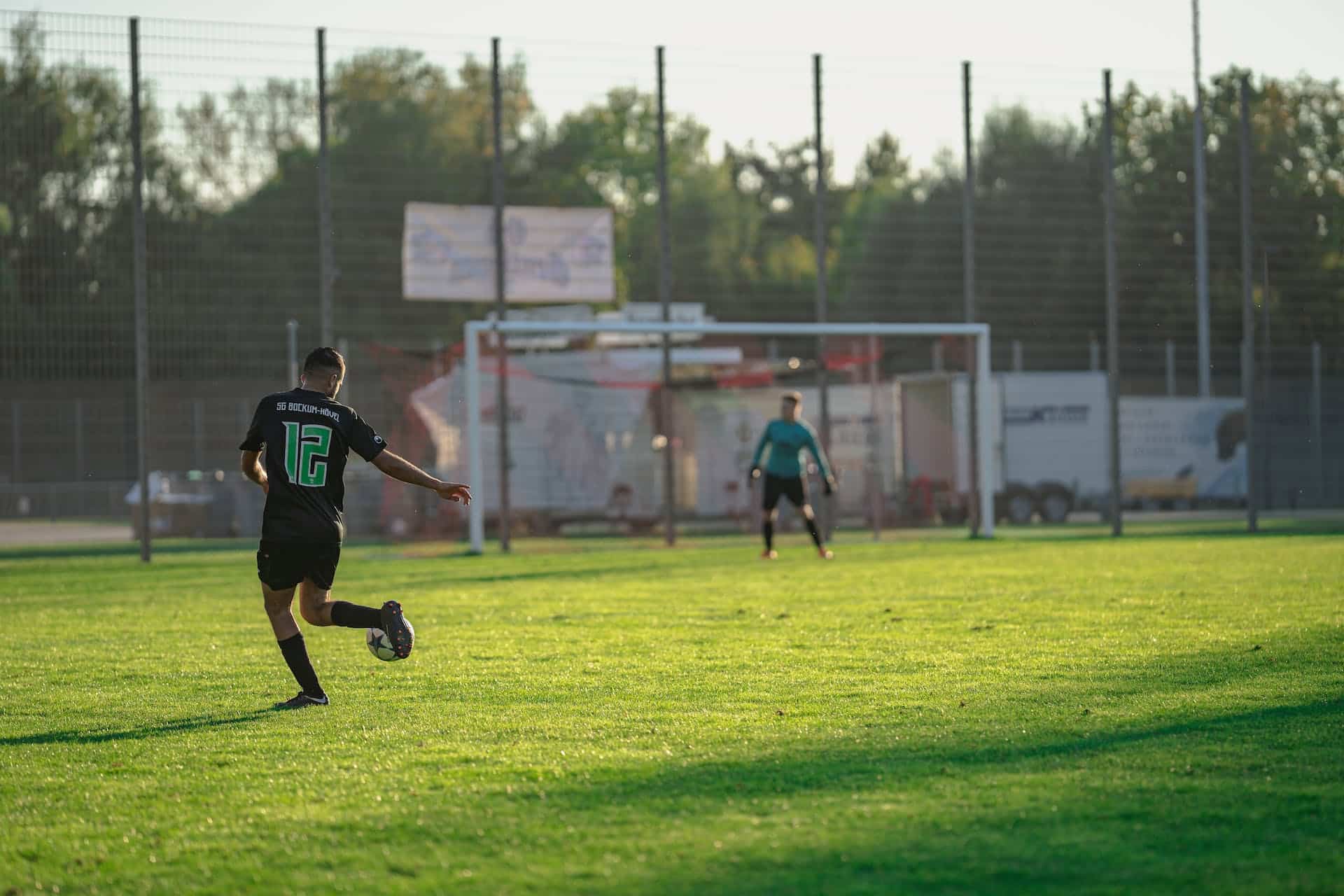Everyone loves the beautiful game of soccer. The thrill of the ball hitting the back of the net, the exuberance of the players, and the excitement that engulfs the spectators is simply captivating. But the journey to this excellence requires effort, dedication, and a systematic approach. It’s crucial to understand that youth soccer coaching isn’t just about dribbling the ball or scoring goals. It involves both technical skills and physical fitness. So, how do you strike the right balance? Let’s delve into the best approaches for balancing technical skills and physical fitness in youth soccer training.
Developing Technical Skills: The Heart of the Game
At the heart of soccer lies the technical part of the game. This involves the skills each player brings to the game, such as passing, shooting, dribbling, and controlling the ball. But at the core of all these skills is one key element—training. Training the youth to become gifted players requires a comprehensive approach.
A voir aussi : How can adaptive training programs support aging athletes in competitive sports?
Effective soccer training starts with understanding each player’s strengths and weaknesses. Coaches need to take time to identify the areas that each player excels in and those that need improvement. Once these areas have been identified, individualized training sessions can be created to focus on improving these areas.
For instance, to improve dribbling skills, coaches can set up obstacle courses that require the youth to navigate through while maintaining control of the ball. This not only improves ball handling but also enhances agility and speed.
Avez-vous vu cela : What are the latest innovations in tracking and improving recovery in endurance sports?
Team exercises are also crucial in developing technical skills. Regularly playing practice matches allows the players to understand how to apply their individual skills in a real game scenario. It also allows coaches to observe and improve the team’s overall performance.
Fostering Physical Fitness: The Powerhouse of Performance
Physical fitness is a vital component that fuels the player’s performance on the pitch. It’s about more than just having the strength to kick the ball. It encompasses speed, agility, and endurance.
Youth soccer players need to work on their speed to be able to outrun their opponents and reach the ball first. Coaches can help improve speed by incorporating sprint drills in the training sessions. These drills not only enhance speed but also build player’s strength and stamina.
Agility, on the other hand, is about how quickly players can change their body’s direction without losing balance. This is paramount especially in situations where they have to dribble past opponents. Coaches can improve agility by including ladder drills and zig-zag runs in the training program.
Endurance is the ability to keep going without getting fatigued. This is vital, especially during the last minutes of the game, when the outcome can be decided. To build endurance, coaches can introduce long-distance running and interval training.
Striking the Balance: The Synergy of Skills and Fitness
Now that we’ve dissected the importance of both technical skills and physical fitness, let’s explore how to balance the two.
A well-rounded soccer player is one who can skilfully control the ball while maintaining a high level of physical fitness. But achieving this balance requires a well-planned and executed training program.
One approach to achieving this balance is to incorporate both technical skills and physical fitness exercises in every training session. For instance, a typical training session could start with warm-up exercises to boost physical fitness, followed by specific drills to improve technical skills.
Another approach is to alternate between the two. One day could be dedicated to technical skills training and the next to physical fitness. This allows players to fully concentrate on each aspect without feeling overwhelmed.
Moreover, coaches should encourage players to engage in self-training outside of the formal training sessions. This can involve simple exercises such as juggling the ball or jogging, which enhance both technical skills and physical fitness.
The Role of Coaches: Guiding the Development Process
Coaches play an instrumental role in balancing technical skills and physical fitness in youth soccer training. They are the pillars that guide and drive the player’s development process.
A good coach is one who understands the unique needs of each player and is able to create a conducive environment for growth. This involves setting realistic goals, providing constructive feedback, and fostering a culture of discipline and hard work.
Additionally, coaches must emphasize the importance of nutrition and rest. Proper nutrition provides the energy needed for effective training and optimal performance. Rest, on the other hand, allows the body to recover and prevents burnout.
In conclusion, balancing technical skills and physical fitness in youth soccer training is a crucial but achievable task. With the right approaches, dedication, and guidance, youth players will not only become better soccer players but also healthier individuals.
Embedding Decision Making into Training: The Art of Mentality
The mental aspect of the game, particularly decision making, is another vital area that requires attention in youth soccer training. It’s the game-changing factor that separates average soccer players from great ones. To excel in soccer, players need not only perfect their technical skills and physical fitness but also their decision-making abilities.
A common problem faced in youth soccer is that players are often drilled to perform certain moves or actions without much consideration for the situation in the game. The result is a robotic style of play, with players unable to adapt to changing scenarios. Coaches need to encourage players to think and make decisions on their own.
One way to achieve this is by incorporating decision-making drills into training sessions. These drills are designed to simulate in-game scenarios, demanding players to react accordingly. For instance, coaches can set up 2v2 or 3v3 small-sided games, where players have to decide when to pass, shoot, or dribble based on the game situation.
Additionally, the soccer coach can encourage players to watch professional games and analyze the players’ decisions. This not only helps players understand the rationale behind certain actions but also enables them to learn new techniques and strategies.
Integrating Plyometric Training: The Essence of Power and Speed
In soccer, having explosive power and speed can give players a competitive edge. Plyometric training is an excellent way to build these attributes. It involves exercises that aim to increase strength, speed, and power by training the muscles to exert maximum force in short intervals. These exercises typically involve jumps and hops that use the body’s weight and gravity to build muscle power.
Coaches can incorporate plyometric exercises into training sessions in various ways. For instance, they can include exercises like box jumps, hurdle hops, and bounding exercises. These exercises not only improve a player’s jumping ability but also enhance speed and agility.
However, it’s important to note that plyometric training should be introduced gradually, particularly for younger players. Starting with lower intensity exercises and progressively increasing the intensity over time can help prevent injuries.
Moreover, it’s crucial to teach players the correct techniques to perform these exercises to ensure they’re effective and safe. Proper supervision during these exercises can also help prevent any potential injuries.
Wrapping It Up: The Journey towards Excellence
In essence, the journey towards soccer excellence is a combination of various elements – technical skills, physical fitness, decision making, and power and speed. As a soccer coach, balancing these aspects in your youth soccer training is the key to nurturing well-rounded players.
Remember, it’s not about having the best players in your team; it’s about making each player the best they can be. This means understanding each player’s unique needs and tailoring your training accordingly.
Training load should also be monitored to prevent overtraining and injuries. This can be done using various tools and technologies that track the players’ training load, heart rate, and recovery times.
Finally, it goes without saying that passion and enjoyment are fundamental to player development. Therefore, always strive to make your training sessions enjoyable and engaging. After all, soccer is not just about winning; it’s about the love of the game.
In conclusion, the route to becoming a proficient soccer player isn’t easy. It requires effort, dedication, and perseverance. However, with the right coaching and a balanced approach to youth soccer training, players can hone their technical skills, boost their physical fitness, make intelligent decisions on the pitch, and ultimately, improve their game.






